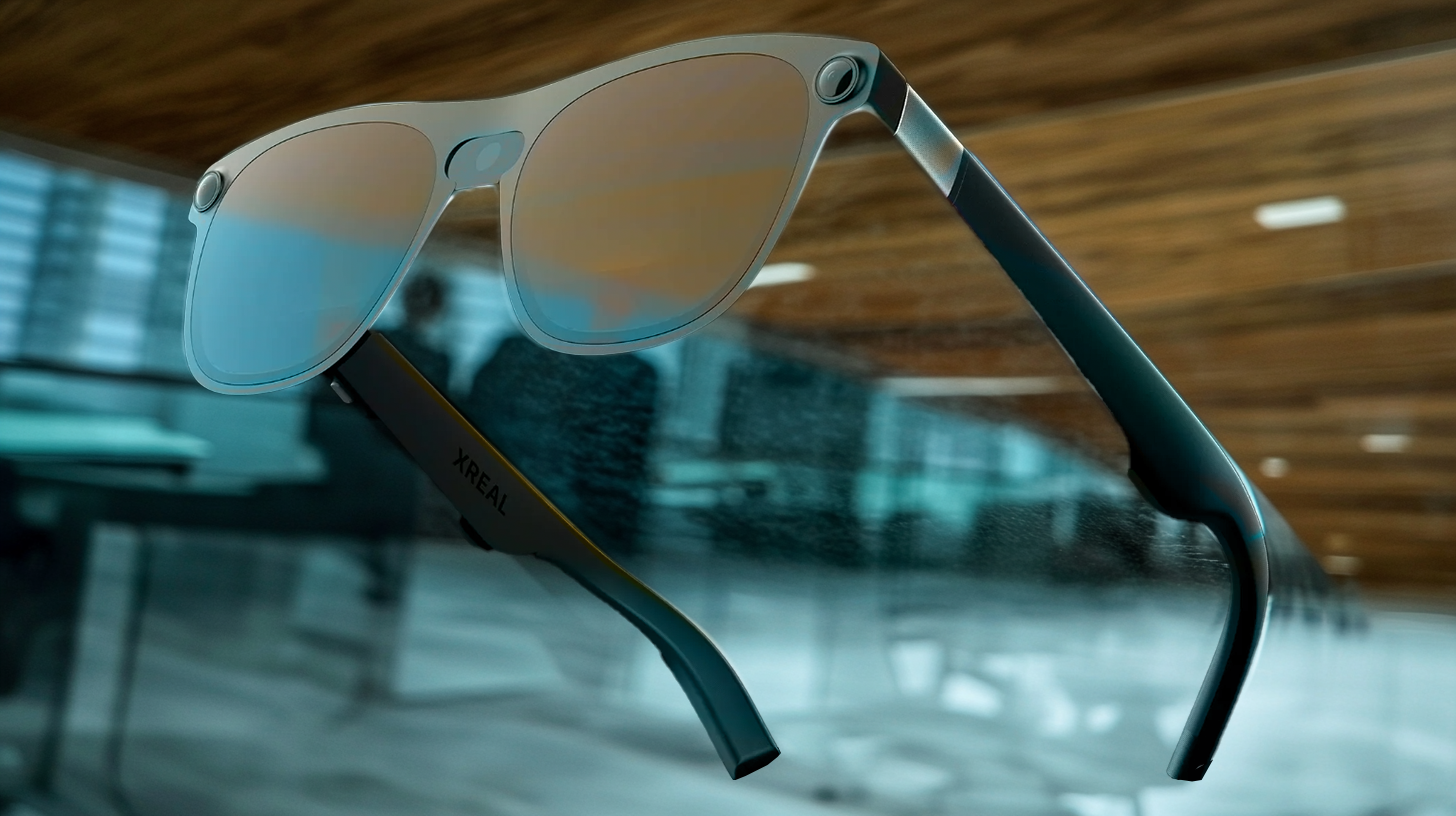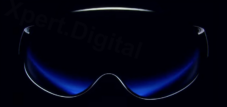XReal and Google: Partnership for the future of expanded reality
XR innovation: XReals contribution to the Android XR platform as a pioneer for the next generation of spatial computing
On the Google I/O 2025, XReal has made a groundbreaking announcement that has the potential to fundamentally change the market for expanded reality. The Chinese company presented “Project Aura”, an optically transparent XR glasses that was developed as the second official device for Google's Android XR platform. This strategic partnership between XReal, Google and Qualcomm Technologies marks a decisive milestone in the development of portable XR technologies and could significantly exacerbate intensive competition with established actors such as META and Apple.
Suitable for:
- With Google's return to mixed reality, an exciting competition begins with Meta, Apple, Pico, HTC and Xreal
Technical innovation and hardware architecture
Optical through view technology as a key feature
Project Aura is based on an optically transparent (Optical See-Through, East) XR architecture, which is a fundamental difference to conventional virtual reality headsets. This technology enables users to perceive the real environment at the same time and to experience digital content, which creates a more natural and less insulating user experience. The glasses use Xreal's proven birdbath look that uses a curved mirror system to offer a brighter and wider field of vision. This technology represents a cheaper alternative to more expensive waveguide optics, even if it is associated with a somewhat bulky design.
The hardware specifications show impressive technical performance. Based on the experience with the XReal Air 2 Ultra, which can project up to a 385-inch virtual screen with a dual Sony 0.68-inch 1080p micro-oled displays, a 120-HZ image repetition and 500 nits brightness, are expected for Project Aura similar or improved specifications. The design remains compact and lightweight, which is crucial for everyday usability.
Processor and Connectivity architecture
Project Aura is driven by Qualcomms especially for XR-optimized Snapdragon XR chips. These processors are specifically developed for spatial computing and offer the necessary computing power for complex AR applications. The device is designed as a “tethered”, which means that it has to be connected to an external device in order to function completely. This connection could open up various options, from use with smartphones to special computers, and enables the glasses to make the glasses easier and more compact.
The camera configuration includes several sensors: dual 3D environmental sensors in the upper corners of the front frame and an additional camera above the nasal back. This arrangement enables precise surrounding tracking and supports the AI-based functions of glasses.
Suitable for:
- XR and AR platforms for AR glasses or Smart Glasses from Qualcomm with Snapdragon 'XR2 Gen 2' and 'AR1 Gen 1' platform
Android XR platform and software integration
Google's strategic platform positioning
Android XR represents Google's most comprehensive effort to establish itself as a leading operating system for future virtual and augmented reality devices, similar to Android for smartphones. The platform was specially developed in the “Gemini era” and supports both Virtual See-Through (VST) and Optical See-Through (East) devices. Project aura is the first glasses format that runs on Android XR after Samsung's announcement of the Project Moohan Headset.
The second preview version of the Android XR SDK is already available for developers and brings improved tools and the preparation of the Play Store for XR apps, including 2D compatibility. This enables developers to adapt existing Android apps relatively easily for the XR platform, which could be a decisive factor for the success of the ecosystem.
Gemini Ai integration and Project Astra
The integration of Google's Gemini Ai represents one of the most innovative aspects of Project Aura. “Project Astra” can see the KI the same and hear the user, which means that it can understand the context of commands and provide contextual information. This functionality was already demonstrated on the Google I/O 2024 when a user went through a room and the AI asked for lost glasses, whereupon it replied: "The glasses are on the desk near a red apple".
The practical applications of this AI integration are diverse: real-time translations, AI-based assistant chats, web searches, object detection and the display of contextual information. Users can send messages, make appointments, call down directions via Google Maps or take photos, to take everything out of voice commands and without having to take out the pocket without the smartphone.
Market positioning and competitive landscape
Strategic partnerships and ecosystem structure
The partnership between XReal, Google and Qualcomm represents a powerful alliance that combines hardware expertise, software innovation and chip technology. Xreal benefits from the partnership through access to the latest technologies in the XR area and from the marketing power of these technology giants. For Google, the spread of Android XR is crucial to motivate developers to create apps for the operating system.
Google has also announced partnerships with established glasses manufacturers such as Gentle Monster and Warby Parker to "develop stylish glasses with Android XR". These collaborations show Google's strategy to open up various market segments and to address both technology-oriented and fashion-savvy target groups.
Competition to Meta and Apple
Project Aura is in direct competition with Meta's Ray-Ban products and Snap's recently presented spectacles. The market launch could exacerbate the competition, since glasses offer a lighter alternative to bulky headsets and have the potential to revolutionize the way we interact with digital content. It is particularly noteworthy that Project Aura combines both the portability of the XReal hardware and the performance of Android XR and Gemini AI, which is a unique promise of value.
Developer ecosystem and market launch strategy
Developer-focused introduction
Xreal positions Project Aura explicitly as a “call-to-action” for developers. The company invites the developer community to develop new applications and applications for this next generation of XR technology. Developers who already develop for headsets on the Android XR platform can easily portray their apps to Project Aura.
This strategy follows the proven pattern to first remove a developer kit to promote app development before the product becomes available for consumers. The quality and diversity of the available apps is an essential factor for the success of an operating system, which is why this developer-centered approach is strategically sensible.
Timetable and availability
According to Bloomberg, Xreal is planning the market launch of Project Aura for the end of 2025 or early 2026. Further details will be announced on the Augmented World Expo (AWE) in June 2025. The time vote is strategically chosen because it takes place shortly after the planned start of Samsung Mixed Reality Headset Project Moohan, which could enable seamless integration and use of the new Android XR technologies.
Suitable for:
- Xpert study on “The Market for Smart Glasses” - Analysis of market penetration, competition and future trends
Technological challenges and future prospects
Optical technology compromises
The use of Birdbath optics in Project Aura brings with it both advantages and challenges. While this technology is cheaper and offers a brighter, wider field of vision, it is often accompanied by a bulky design. In contrast, WaveGuides are thinner and offer better transparency, but are more expensive in production and typically have a smaller field of vision. XReal must carefully weigh this compromise in order to create a marketable product.
The “tethered” design, although it makes the glasses easier, could be a restriction for some users because they have to carry an additional device with them. This design decision reflects the current state of the technology, in which the miniaturization of high-performance processors for fully autonomous glasses is not yet sufficiently advanced.
Long -term market effects
Project aura could mark a turning point in the acceptance of AR glasses. The combination of XReal's hardware expertise, Google's software platform and Qualcomms chip technology creates an ecosystem that has the potential to bring AR glasses from the niche segment to the mainstream. The integration of Gemini Ai could be particularly crucial because it enables practical, everyday use cases that go beyond pure entertainment.
The successful introduction of Project Aura could also encourage other manufacturers to develop similar products, which could lead to faster innovation and wider market deal. This would support Google's strategy to establish Android XR as a dominant operating system for XR devices, similar to Android for smartphones.
Market start 2026? Project aura and the future of the developer ecosystem
Project Aura represents significant progress in Evolution portable XR technologies and could act as a catalyst for the broader adoption of AR glasses. The strategic alliance between XReal, Google and Qualcomm combines complementary strengths and creates a product that is technically progressive and practical. With the planned market launch at the end of 2025 or early 2026, Project Aura faces the challenge of fulfilling the high expectations and at the same time set a new standard for portable XR devices. The success will ultimately depend on how well it is to build a robust developer ecosystem and create convincing applications for everyday use.
Suitable for:
Your global marketing and business development partner
☑️ Our business language is English or German
☑️ NEW: Correspondence in your national language!
I would be happy to serve you and my team as a personal advisor.
You can contact me by filling out the contact form or simply call me on +49 89 89 674 804 (Munich) . My email address is: wolfenstein ∂ xpert.digital
I'm looking forward to our joint project.


